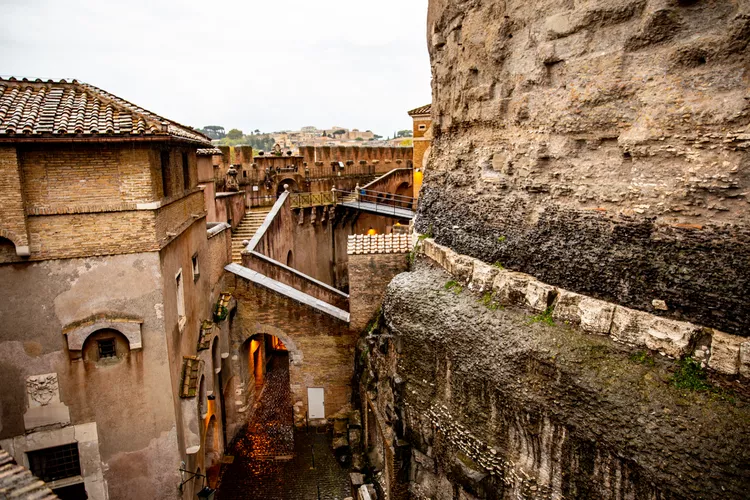Castel Sant’Angelo: A Historical Overview
- Introduction to Castel Sant’Angelo
- Services Available for Visitors
- How to Get There
- Recent Renovations
- Exploring the Castle’s Features
Built as a cylindrical mausoleum by Rome’s Emperor Hadrian on the Tiber River just east of what is now the Vatican, Castel Sant’Angelo has a rich history. Originally converted into a military fortress, it was fortified further by the Pope in the 14th century. The structure is named after the statue of Archangel Michele (Michael) located at its pinnacle. Today, Castel Sant’Angelo functions as a museum, recognized as the Museo Nazionale de Castel Sant’Angelo.
Services Available for Visitors
Visitors can enjoy guided tours or utilize audioguides during their exploration. Accessibility options are available for individuals with mobility impairments. Additionally, there is a delightful café situated on the top floor that offers breathtaking views of Rome. If you arrive early for lunch, you might be fortunate enough to secure a table with a spectacular view of St. Peter’s Basilica. Prices are reasonable, and the coffee is notably good.
To find current prices and detailed information, you can visit the official Museo Castel Sant’ Angelo website.
How to Get There
Utilizing bus lines 80, 87, 280, and 492 will get you conveniently close to Castel Sant’Angelo. A taxi stand is available at Piazza P. Paoli. For those staying in the city center, such as near Piazza Farnese, a pleasant walk down Via Giulia, followed by a right turn toward the Tiber and crossing the Sant’Angelo Bridge adorned with statues, is highly recommended.
Recent Renovations
Recently, it was discovered that Castel Sant’Angelo was in poor condition, prompting Italy to allocate 1 million Euros for necessary repairs following immediate fixes costing 100,000 Euros. Consequently, visitors should be aware that these activities may affect their experience.
Exploring the Castle’s Features
Castel Sant’Angelo boasts five floors. The first floor features a winding ramp of Roman construction, while the second contains prison cells. The third floor includes military spaces with large courtyards, the fourth is dedicated to papal history with exquisite art, and the fifth offers a vast terrace with stunning views of the city.
In 1277, Castel Sant’Angelo was linked to the Vatican via a historical corridor known as the Passetto di Borgo. This connection allowed the castle to serve as a refuge for Popes during times of siege in Rome. Moreover, the castle also accommodated Popes in its prison cells. The Passetto, located on the north side of the aptly named Via dei Corridori, is notable for its rich history. You can explore it on a Google Map. Access to the Passetto is limited and can be found in detail on the Atlas Obscura page.
Additionally, Puccini’s opera *Tosca* is set in Rome and features the ringing of the bells of Castel Sant’Angelo. Interestingly, Puccini traveled to Rome specifically to capture the pitch, timbre, and pattern of these bells. He even ascended to the top of the tower at Castel Sant’Angelo to experience the matin bells, which are rung in the morning by local churches, prominently featured in the third act of *Tosca*.





